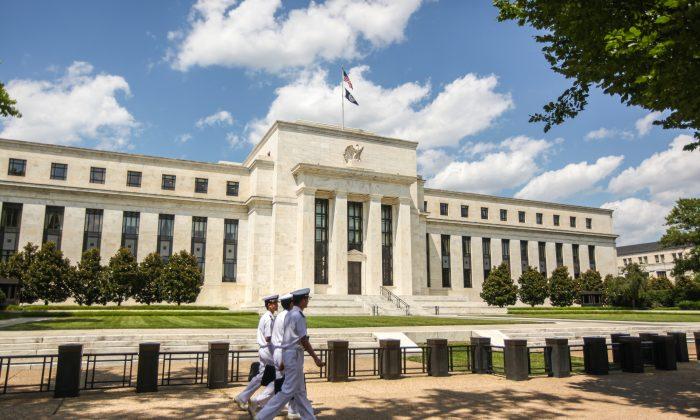If you visit the Federal Reserve’s Facebook page, you will seldom find a positive comment. That’s because people who don’t care about central banking won’t go to the Fed’s Facebook page. That leaves only the ones who are positive about it—if they exist—and the ones who don’t like central banks.
The right doesn’t like central banks because of their centrality. The banks centralize power over interest rates, and the right doesn’t like central control over pretty much anything. The left doesn’t like central banks because they represent money, capitalism, and “too big to fail” banks.
However, despite the confusion and complicated hybrid setup of the Fed and other central banks, these institutions are more communist and socialist in nature than capitalist.
Contrast these two statements from two important historical documents.
One calls for the “Centralization of credit in the hands of the state, by means of a national bank with State capital and an exclusive monopoly.”
The other one gives Congress the power to “coin Money, regulate the Value thereof, and of foreign Coin, and fix the Standard of Weights and Measures.”
Karl Marx and Friedrich Engels penned the former statement in 1848 in their infamous “Communist Manifesto.”
Alexander Hamilton, John Adams, James Madison, and Thomas Jefferson were responsible for the inclusion of Article 1, Section 8 of the U.S. Constitution, the source of the latter statement.
National Monopoly
The Fed is a national banking system and has an exclusive monopoly on issuing the U.S. dollar credit instrument in paper and electronic form.The Communist Manifesto furthermore calls for “gradually substituting paper money for gold and silver coin.” This objective was achieved, gradually, from the beginnings of the Fed in 1914 until the revocation of the Bretton Woods modified gold standard in 1971. Since then, the world has operated on a global paper dollar standard.
Furthermore, the manifesto wanted the “paper issues [to be] legal tender,” a principle dutifully incorporated into the Federal Reserve Act of 1913.
Under the act, “the said notes shall be obligations of the United States and shall be receivable by all national and member banks and Federal Reserve banks and for all taxes, customs, and other public dues. They shall be redeemed in lawful money,” where “lawful money” means legal tender.
Hybrid Ownership
What about ownership, capital, supervision, and credit? This is where the Fed does not meet the strict manifesto standard. Legally, the Federal Reserve System is a public/private hybrid, with private banks owning the shares or capital of the system and the government providing some, though not all, of the supervision.So the Fed does not operate on state capital. However, it shares its profits with the Treasury and most of the important decisions are made by publicly appointed officials. The president appoints seven of the 12 members of the Fed body that decides monetary policy (the Federal Open Market Committee) and they are then confirmed by the Senate. So it does sound like the “centralization of credit in the hands of the state,” or at least the power to manipulate credit.
Credit is not centralized in one bank, but rather in the one Federal Reserve System, which includes thousands of privately owned banks that issue credit to their customers. This goes against the call for “suppression of all private banks and bankers,” because they still exist. However, the system has central control over credit due to regulation and tinkering with the interest rates.
The Fed can control how many reserves the system banks must hold and how much money (credit) they can lend. The open market operations that determine the interest rate on the reserves also incentivize banks to free up or contract credit.
In fact, setting short-term rates and manipulating long-term rates centrally through large-scale asset purchases, like the Quantitative Easing program, is akin to communist central planning.
In the free market, private banks compete for savings, and the interest rate is set in a competitive bidding process between different economic actors. Not so in a centrally controlled system.
Lastly, Marx and Engels got their wish written in 1848: “In most advanced countries, the following will be pretty generally applicable,” with “the following” including centrally controlled credit and other demands of the manifesto.
Today, the only countries without central banks are the micro states of Monaco, Nauru, Kiribati, Tuvalu, Palau, Marshall Islands, and the Federated States of Micronesia.






Friends Read Free